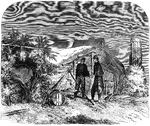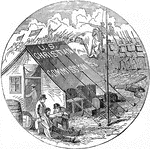1861-1865 Civil War Camp Life
The 1861-1865 Civil War Camp Life ClipArt gallery offers 35 illustrations of typical camp life and training for a soldier in the American Civil War.
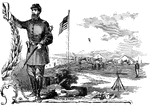
Aid-de-camp
"New Jersey Camp at Arling, Va., designated as Camp Princeton in honor of one of the Revolutionary battle…

Artillery Practice
"Artillery practice with the Dahlgren Howitzer boat gun- loading."— Frank Leslie, 1896

Artillery Practice
"Artillery practice with the Dahlgren Howitzer boat gun- officer giving the word of command to fire."—…

Bivouac of the Eleventh Indiana Volunteers
Our special artist, who accompanied General McClellan's command, sketched the gallant Eleventh Indiana…

Blacksmith
"Scene in camp near Falmouth, Va. Army blacksmith shoeing a refractory mule."— Frank Leslie, 1896

Butchering Cattle
"Butchering and dressing cattle for distribution to the Federal Army. The romance and reality of life…
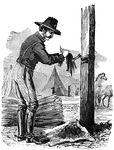
Chaff
"Cutting coarse forage into chaff. Hints to Soldiers in the camp and on campaign."— Frank Leslie,…

Chimney Architecture
"Scene in camp life- chimney architecture- the Federal soldiers at their camp fires."— Frank Leslie,…

Confederate Fortifications
"Interior of the principal Confederate fortifications near New Berne, N. C., after their capture by…
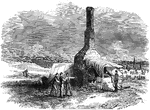
Cookhouse
"Army cookhouse constructed in an old chimney of an outhouse of the Lacy Mansion, on the Rappahannock,…
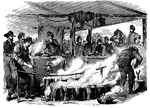
Cooking in Camp
The kitchen of the Fremont Dragoons at Tipton, Missouri. Tipton, which is 38 miles from Jefferson City,…

Distributing
"Distributing rations and appointing a knapsack guard before a reconnoissance near Warrentown, Va. Our…

Drilling Troops
The influx of Northern regiments of troops into Washington during the early days of the war rendered…

Garibaldi Guards
"Camp of the Garibaldi Guards, Colonel D'utassy, near Roche's Mills, Va., Potomac River in the distance.…

Horseshoeing
"Horseshoeing in the army. Not like the country blacksmith, by the highroad upon the skirt of the village,…

Land Practice
"Land practice of sailors with the Dahlgren Howitzer Boat Gun, sponging out the gun."— Frank Leslie,…
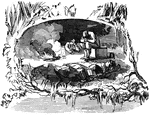
Midnight in the West
"Camp life in the West. During one of the pauses in the active part of the Missouri campaign our special…

Morning Detail
"The morning detail of the Fourth New Hampshire Volunteers going to work on the Hilton Head Fortifications.…

Oven
"'Fresh Bread!'- Impromptu oven built by the Nineteenth Regiment, New York Volunteers, in General Banks's…

77th Pennsylvania Regiment
"Captain Muller's Battery Company of the Seventy-seventh Pennsylvania Regiment making fascines and gabions…
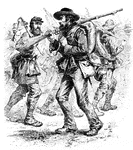
Confederate Soldiers
An illustration of a group of confederate soldiers walking in full uniform and armed.
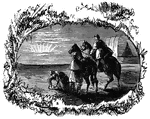
Sunrise in the West
"Camp life in the West. During one of the pauses in the active part of the Missouri campaign our special…

Siege of Vicksburg
"Siege of Vicksburg. Life in the trenches- bivouac of Leggett's Brigade- McPherson's Corps at the White…

War Dance
"Camp life in the West. During one of the pauses in the active part of the Missouri campaign our special…

Water Skin
"Water skin and mode of carrying. Hints to Soldiers in the camp and on campaign."— Frank Leslie, 1896

Winter Quarters
"Winter quarters on the Rappahannock- army huts of the One Hundred and Nineteenth Regiment, Pennsylvania…

Ellsworth Zouave
Zouave was the title given to certain infantry regiments in the French army, normally serving in French…




